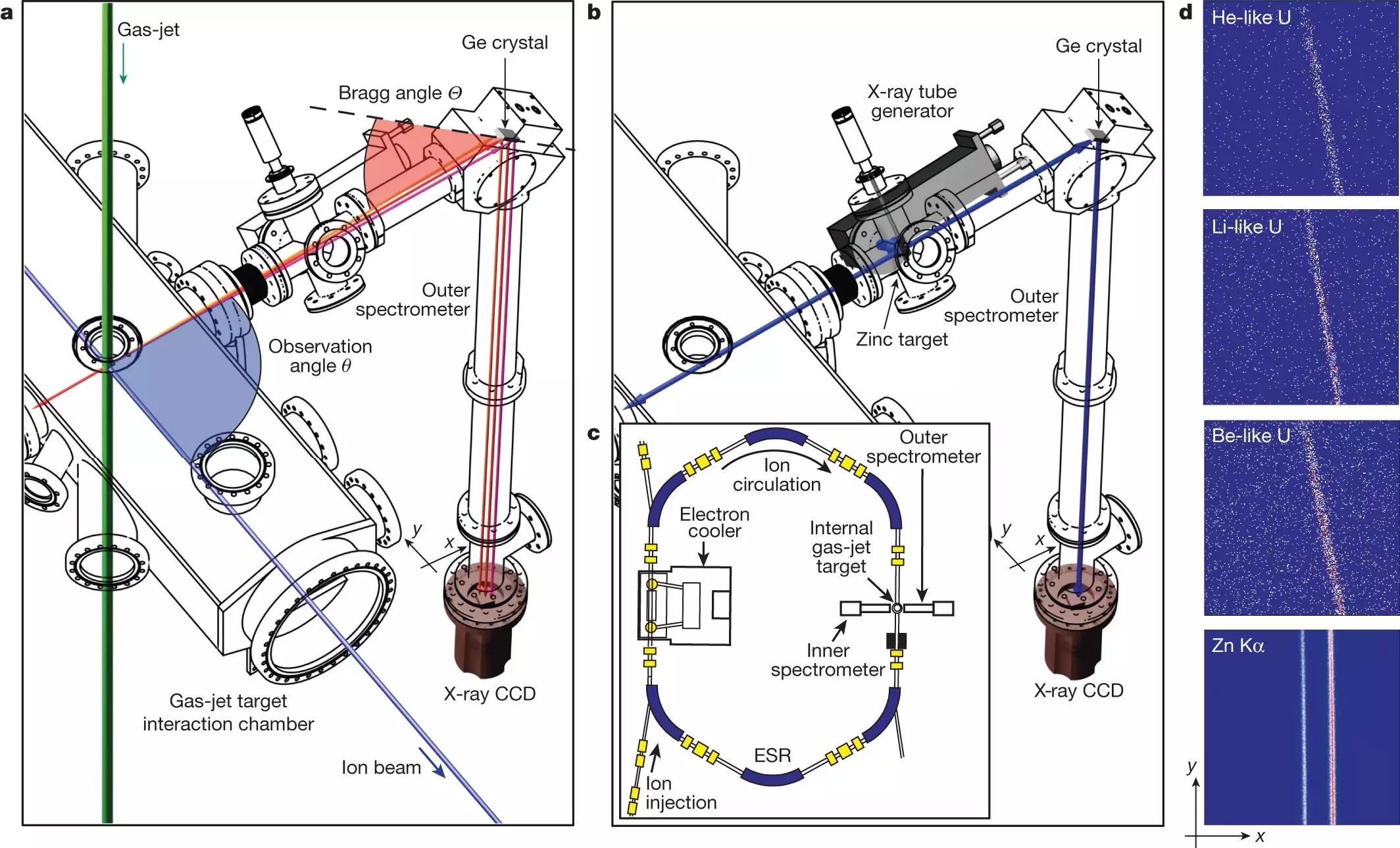Advancements in scientific research continue to push the boundaries of our understanding of the fundamental mechanisms that govern our world. In a remarkable achievement, an international research team, comprising scientists from Friedrich Schiller University Jena and the Helmholtz Institute Jena in Germany, has made significant strides in the field of ultra-precise X-ray spectroscopy. By focusing on helium-like uranium, the team successfully disentangled and separately tested one-electron two-loop and two-electron quantum electrodynamic effects for extremely strong Coulomb fields of heavy nuclei. The groundbreaking results have been published in the prestigious journal Nature.
The research project tackled the age-old question of what holds our world together at its most fundamental level. Led by Dr. Robert Lötzsch, an experimental physicist at the Institute of Optics and Quantum Electronics at the University of Jena, the team employed advanced measurement techniques. Notably, they conducted precise measurements on the heaviest stable atoms, revealing intriguing insights into their behavior. While the electron transitions in a hydrogen atom can be measured to 13 decimal places, the team achieved measurements to an impressive five decimal places for uranium, which boasts an atomic number of 92. The focus of the measurement lay in scrutinizing the transitions between different orbits, shedding light on the harmonious dance of subatomic particles within heavy atoms.
Rigorous Experiments at the GSI/FAIR Complex
To derive these groundbreaking results, the experimental measurements were carried out at the GSI/FAIR experimental storage ring in Darmstadt. This state-of-the-art particle accelerator complex serves as a collaborative platform for several European countries. For the recent measurements, study groups from Poland, France, Portugal, and Germany collaborated under the guidance of Martino Trassinelli and Robert Lötzsch. The Darmstadt complex boasts a remarkable ion storage ring spanning over 100 meters, coupled with an upstream accelerator that extends for over a kilometer.
The experiment’s machinery involves a meticulously orchestrated series of steps, culminating in the precise measurement of electron transitions. Initially, free ions are generated by vaporizing uranium, after which they are accelerated to an astounding 40% of the speed of light. As the resulting material undergoes electron loss, it is fed through a specialized film. The ensuing accelerated electrons are then directed into a storage ring, where they traverse a circular trajectory. The spectrometers stationed along the path detect the particles, flashing up to an astonishing 50 million times per second. Periodically, electron transitions occur, creating measurable signals that are captured by the spectrometers.
Central to the success of the experiment is the innovative Bragg crystal spectrometer, carefully constructed in Jena. At its heart lies a meticulously crafted crystal composed of germanium. Remarkably thin, the crystal is held in a specially designed glass mold. This advanced technique, developed over the course of three decades in Jena, demands exceptional expertise. The research community’s tireless efforts in perfecting these measurement devices have culminated in the present breakthrough.
The research group’s remarkable achievements emerged from an experiment conducted in 2021. Despite the complications posed by the COVID-19 pandemic, the tests ran for three weeks over the Easter period. Dr. Lötzsch firmly believes that the tremendous effort expended in the face of adversity was unquestionably worthwhile, given the profound findings obtained. The study not only expands our knowledge of the inner workings of heavy atoms but also lays the foundation for future advancements in the field of ultra-precise X-ray spectroscopy.
The groundbreaking research conducted by the international team heralds a new era in the study of heavy atoms. By meticulously disentangling complex quantum electrodynamic effects within helium-like uranium, scientists have gained valuable insights into the mysterious world of atomic behavior. These results open doors to further exploration and could potentially unlock deeper layers of knowledge about the universe’s fundamental fabric. As the pursuit of scientific understanding continues, the impact of this research will undoubtedly reverberate across various fields of study, paving the way for future breakthroughs.


Leave a Reply